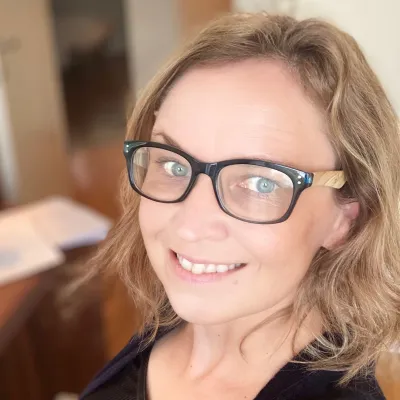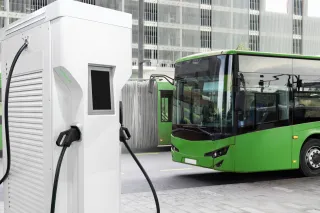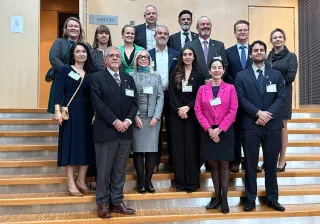What do the impact assessment of the Turku light rail network, the integration of immigrants into the labour market in Espoo and the circular economy of rice stems in the city of Saga in Japan have in common? The answer: they have all benefited from VTT's CityTune concept. VTT's CityTune is a set of tools for modelling different aspects of urban life.
We use the models to illustrate complex causal relationships,
VTT's data-based CityTune toolkit enables holistic urban planning.
VTT does not provide cities with generic solutions to individual problems. Instead, it gives them a holistic, data-based overview. VTT's expertise can be extremely useful for city planners who are trying to understand complex systems that divide opinion.
– We can build structured models that not only help people to communicate but also to optimise operations and plan ahead, Ylén explains.
The CityTune toolkit provided valuable support, for example, when VTT's scientists were asked to assess the impacts of a new light rail network in Turku.
– A rail-based system is never worth building if you only look at it from the perspective of transport. Buses are always going to provide a cheaper, more flexible and more efficient way for people to get around, Ylén says.
If seen as an urban development tool, however, rail-based solutions suddenly become extremely attractive. There is ample evidence of the viability of rail transport from all over Europe. The Ring Rail Line in Vantaa, for example, which connects Helsinki Airport to the Helsinki commuter rail network, appears to have completely transformed the city. After a steady decline until 2014, Vantaa's population is now growing rapidly.
One of the easiest positive effects to measure is the rise in property prices and rents. Cities can often use the extra income from land to offset the costs of rail investments. More importantly, however, VTT's tools allow cities to analyse long-term impacts that could otherwise be difficult to understand. A rail investment changes the entire structure of a city, as new residents and businesses flock to the corridor around the railway line.
In the case of Turku, VTT's researchers calculated that the city could recoup the more than EUR 300 million that would need to be spent on the light rail network in less than a decade thanks to a more vibrant property market, taxes and ticket sales.

Demand for holistic planning
Holistic urban planning is in high demand at the moment.
– Cities all over the world face the same problem: there is no holistic perspective, Ylén says.
Transport projects, for example, are often only analysed from the perspective of traffic, when they actually have impacts across all spheres of society. According to Ylén, the reason is often money. Having separate budgets for health care, education and infrastructure leads to tunnel vision and makes it difficult for planners to see the big picture.
– Although the importance of a holistic approach is widely recognised, this knowledge is rarely put into practice in cities.
VTT's data-based toolkit is capable of analysing all aspects of urban life: it contains everything from smart city indicators to energy consumption counters, an eco-planning calculator and a wide range of simulation systems. The tools allow scientists to analyse complex interactions.
– We can, for example, identify different kinds of triggers or self-perpetuating structures that can take a city's development in the desired direction.
One of the areas that VTT has been analysing is an old industrial estate called Kera in Espoo. There are plans to turn the district into a residential development with housing for 14,000 people. Kera is also to become an international example of circular economy. VTT's studies show that the project's success hinges on the availability of public transport. According to Ylén, if Kera's location next to a railway line can be leveraged and the district turned into a public transport hub, the project cannot fail.
VTT's CityTune concept also has other uses beyond urban planning. In Espoo, for example, VTT's researchers are currently using the concept to find new ways to integrate immigrants into the local labour market. In Oulu, VTT has been studying ways to prevent social exclusion and mental health issues among young people.
Keeping rice stems in circulation
One of the hottest topics in urban planning at the moment is circular economy. VTT has recently launched a new research project called Circular City, which involves developing a system dynamics model of urban energy production, transport, food and water supply and raw material flows.
– Circular economy could also feature in the CityTune toolkit in the future, Ylén says.
VTT's scientists have already explored the circular economy challenges of, for example, the Japanese city of Saga, where a research team looked for new uses for rice stems. These by-products of rice cultivation are a rich source of cellulose and lignin. In the absence of recycling infrastructure, no-one in the rice cultivation ecosystem has been able to exploit the business potential of rice stems. The stems also cannot be burned, as they cause corrosion in boilers.
Researchers have been looking at a number of solutions to the problem. The authorities could build the necessary ecosystem themselves or come up with an incentive scheme similar to a deposit-refund system for businesses. One option would be to turn the redundant stems into new value-added products.
– The recycling of rice stems can also be incorporated into other fibre-based ecosystems, such as the recycling of wood waste from the textiles and construction industries.
Although many cities face the same challenges, the solutions that work are almost always city-specific.
– Urban planners are always trying to solve a problem. It is not usually possible to use a model developed in one city in another.
Nevertheless, VTT's scientists have done the groundwork. They already have the data-based CityTune toolkit, a great impact assessment concept and dozens of projects' worth of experience.
– We have an excellent set of building blocks to get us started, Ylén says.





